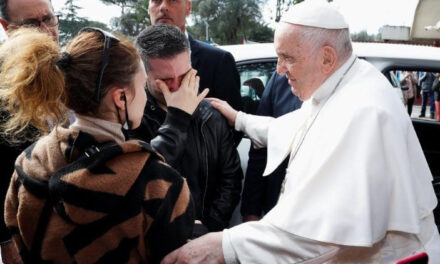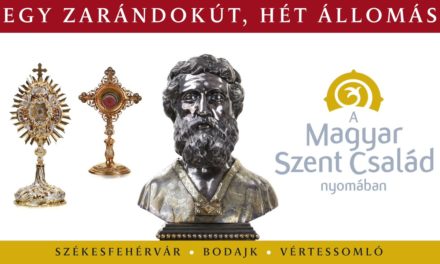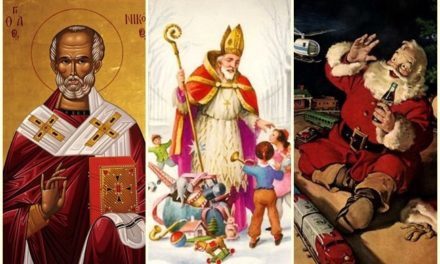An exhibition compiled from the personal legacy of the bishop can be seen in Cluj.
An exhibition listing mainly prayer bouquets, souvenirs, greeting cards and letters from the personal legacy of Bishop Áron Márton can be viewed in the Arsc Sacra Claudiopolitana ecclesiastical art exhibition space in Cluj. The exhibition, which came to the treasured city from the Gyulafehérvár archdiocese, can be viewed by the public at the Szentegyház utca exhibition space until June 7.
The exhibition also lists special items sent to the bishop, such as mine flowers from Kapnikbány in Máramaros County, i.e. glass-like rocks patterned in the shape of flowers, a canvas-covered album of prayer bouquets written in Romanian by the Greek Catholic faithful of Marosvásárhely, a mock-up of a coal transporter sent by the faithful of Lupény in 1949 or Bulgarian folk costume headdress from Óbesnyő in Temes county.
Curator Rita Bernád, director of the Archdiocese Archives of Gyulafehérvár, said that the exhibition opened in Csíksomlyo on February 12, 2019, on the 80th anniversary of the consecration of Áron Márton as bishop.
which was also presented in eight settlements of the archdiocese: Csíksomlyo, Gyergyószentmiklós, Gyulafehérvár, Csíkkarcfalva, Csíkszentdomokos, Székelyudvarhely, Búzásbeseny and Marosvásárhely, and reached Cluj-Napoca as the 9th stop.
"Objective, primarily archival memorabilia will be presented, most of which comes from the personal legacy of Áron Márton. In addition to the hundreds of prayer bouquets sent to the bishop in this legacy, the collection of greetings and greetings sent for birthdays, Christmas, and Easter also includes spiritual bouquets addressed to Áron Márton and offerings included in greetings.
The exhibition provided an opportunity to retrieve and publish the so far unprocessed memorabilia that had been left out of the scope of historical research.
These prayer bouquets are "visible signs" of the love and awe-inspiring attachment that surrounded and accompanied Áron Márton, which was continuously manifested during his four decades of service," Rita Bernád pointed out.
He explained that according to the practice of the time, parish priests and parishes, spiritual groups, monastic communities, priests and lay persons presented their chief pastors with colorful drawings and handmade spiritual bouquets consisting of prayer offerings, good deeds, and virtue exercises.
The director of the archives revived it, Áron Márton received the first prayer bouquet in 1939, on the occasion of his consecration as a bishop.
Most of the prayer bouquets arrived in Gyulafehérvár in 1949, on the 10th anniversary of Áron Márton's ordination as a bishop (and the 25th anniversary of his ordination as a priest).
"The enormous amount of more than one and a half million prayers (Our Father, Hail Mary, rosary, Faithful, Mother of God, Mary's songs, various litanies and novenas, Stations of the Cross), reception of sacraments, Holy Confession, Holy Communion, participation in Holy Mass, as well as thousands of fasting days and "bouquets" that include a good deed go far beyond the "obligatory" respect paid on a festive occasion. The prayers constantly bear witness to the deep love, concern, compassion, helpfulness and willingness to take part in carrying the cross for the senior pastor, who was forced into house arrest and then aged," says the curator of the exhibition.
As he details, the formal solutions, decoration, and execution of the prayer bouquets are similar in many ways to the appearance of the illustrated "memorial" booklets that were widespread in the twentieth century, but at the same time, they were adapted to spiritual themes and used symbols worthy of priests and bishops.
"In the 1950s and 1970s, when it was not possible to get a holy image, there weren't even many albums, they tried to make up for this lack with dexterity and a sense of beauty. In addition to the common flowers (roses, violets, lilies), pine branches, priestly and episcopal insignia and image associations, the symbol of the Good Shepherd, the Sacred Heart of Jesus, from 1949 onwards, the wreath of thorns, the thorny branch that weaves through everything, the portrait of the suffering Christ and the cross-carrying," the curator pointed out.
In addition to Áron Márton's episcopal insignia - miter, pileolus, stole - the exhibition also includes some souvenirs received as gifts related to festive anniversaries.
The exhibition also lists letters received from family members: among the many letters, the most expressive is the letter written by the bishop's younger brother, Ágoston Márton, on the anniversary of his episcopal consecration in 1972:
"By the grace of God, we are again facing a beautiful holiday together with our bishop brother. his brothers and relatives. The thirty-second anniversary of his consecration as a bishop is approaching. It was a long time ago. now we analyze our beautiful experiences. Now ... we also give thanks to the good God for this great award that has come to our family."
The exhibition was realized with the coordination of Archbishop Gergely Kovács, with the support of the archdiocese, with the help of the Archdiocese Archives of Gyulafehérvár, with the assistance of Csilla Lázár, director of the Márton Áron Museum in Csíkszentdomokos, and art historian Enikő Hegedűs. The exhibition can be visited in Cluj on weekdays between 10 a.m. and 5 p.m.
Cover photo: Imacsokrok for Áron Márton: the exhibition, which lists items mainly from the personal legacy of the bishop, can be seen in the exhibition space on Szentegyház Street in Cluj
Source: Krónika.ro/Kiss Judit













